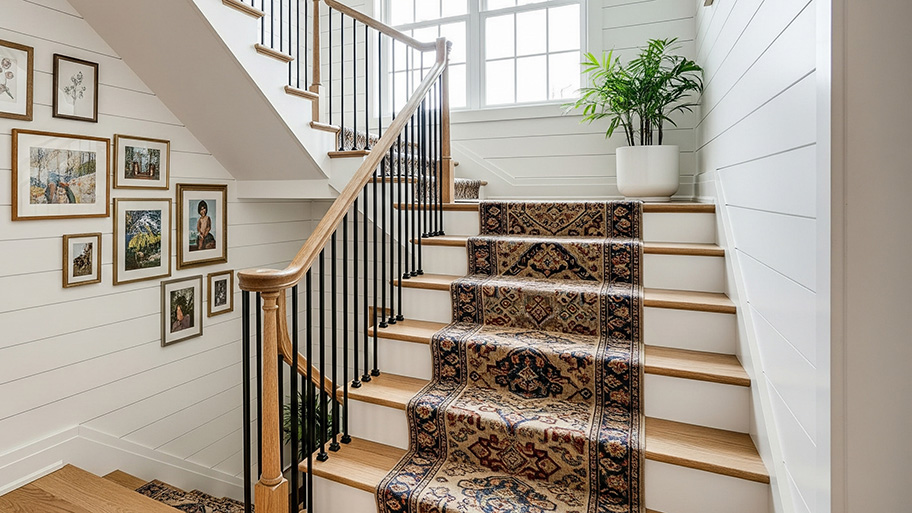
Recessed living rooms used to be popular but have fallen out of favor. This guide discusses the cost to raise a sunken living room to modernize your home.
Keep the four seasons outside where they belong with the help of weatherproofing


Concerned that parts of your home aren’t ready to face winter weather conditions? Hiring a handyperson to weatherize your home can help ensure that your heating and cooling budget isn’t flying out the window each month.
You can hire a local handyperson who provides weatherization services to help identify the places where your home is less energy efficient. They can do this by fixing or replacing drafty windows, repairing poorly insulated attics, and replacing old or missing weatherstripping from your doors. You can expect to pay an average of $60 to $125 per hour, plus the cost of materials.

While not a new concept, home weatherizing is popular among people looking to lower their energy consumption and reduce their carbon footprint. Also known as weatherproofing, weatherization is the process of getting your home ready for the changing seasons. This can mean adding or removing storm windows to replace drafty ones, sealing cracks that allow interior air to leak out and exterior air to move in, and even installing modern HVAC systems that work more efficiently to keep your home comfortable all year-round.
There are plenty of weatherization steps that most handy homeowners can do themselves, like adding a door sweep to prevent drafts from coming in or adding weather stripping around ill-closing doors and windows. Both processes can run you from $130 to $760 to do yourself. Hiring a handyperson who specializes in weatherproofing can help you further identify where your home needs more targeted help—and likely even save you money in the long run by preventing heat loss in the winter, which can increase energy bills.
By definition, a handyperson is someone who handles a variety of home projects. They’re often less specialized than other contractors who work on one particular type of job and instead offer various services. If you want to hire a pro to help weatherize your home, find one specializing in this type of work and has the tools needed (like those infrared cameras) to get the job done. As with most contract jobs, ask your neighbors and friends if they recommend anyone and get a few quotes before settling on a contractor. You can also do an internet search for local handypeople near you.
A handyperson will have tools that can help find out where the issues are. For example, some use thermal imaging cameras to identify where your home is losing ambient air, and then develop a plan to determine why it’s happening and repair it.
You don't have to wait for a handyperson to get started on weatherization. Jot down a list of problem areas you already know about (maybe like that drafty bathroom window) before they arrive. As the person who already knows where the chilliest part of your home is in the winter and which room is hardest to get a comfortable night's sleep in come summer, you already have a head start when it comes to weatherization.
If you don’t want to shell out money for a handyperson, try some DIY weatherization steps.
Use caulk or weather stripping material to seal up common problem areas like doorways and windows and cracks in your foundation, the attic, or the basement.
Insulate your water pipes.
Add door sweeps to eliminate chilly drafts.
Change your furnace filter.
While it’s possible to tackle some weatherization tasks yourself, others are too dangerous or complicated to DIY. For example, simple weatherizing projects like sealing window or door gaps with caulk is manageable to handle on your own. But preparing major home systems like your HVAC or exterior siding for winter should be left to a professional.
Get your HVAC system in gear for winter weather conditions with the help of a local HVAC technician, who can run diagnostics, recommend a weatherization plan, and carry it out to protect your home’s heating system before it’s too late.
From average costs to expert advice, get all the answers you need to get your job done.

Recessed living rooms used to be popular but have fallen out of favor. This guide discusses the cost to raise a sunken living room to modernize your home.

Discover stair repair cost estimates, including average prices, key cost factors, and tips to help you budget for your stair repair project.

Installing a dumbwaiter can save you time and energy. Learn how much a dumbwaiter costs with this guide.

Curious about how to frame a house like a professional? While it's rarely a DIY job, understanding the process can prepare you for your upcoming home construction.

Paperwork is a critical part of any home renovation, helping to protect you and your home from any problems that arise during the project. Learn about all the paperwork you should receive from your contractor for a smooth renovation.

When planning a home renovation or remodel, asking your contractor to reduce the price of the job is never an easy task. But negotiation is possible! Read these tips for negotiating with a contractor the right (and effective) way.